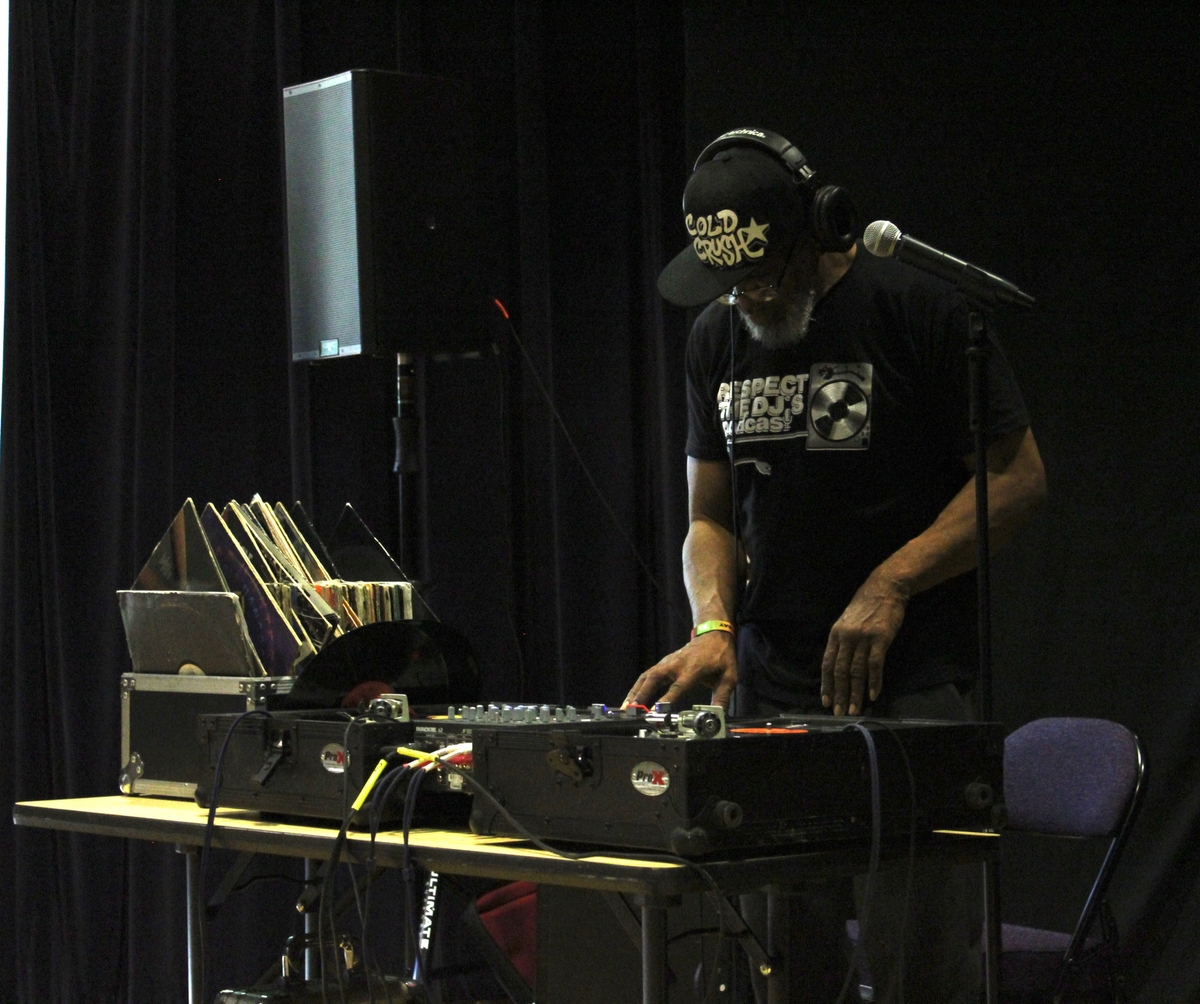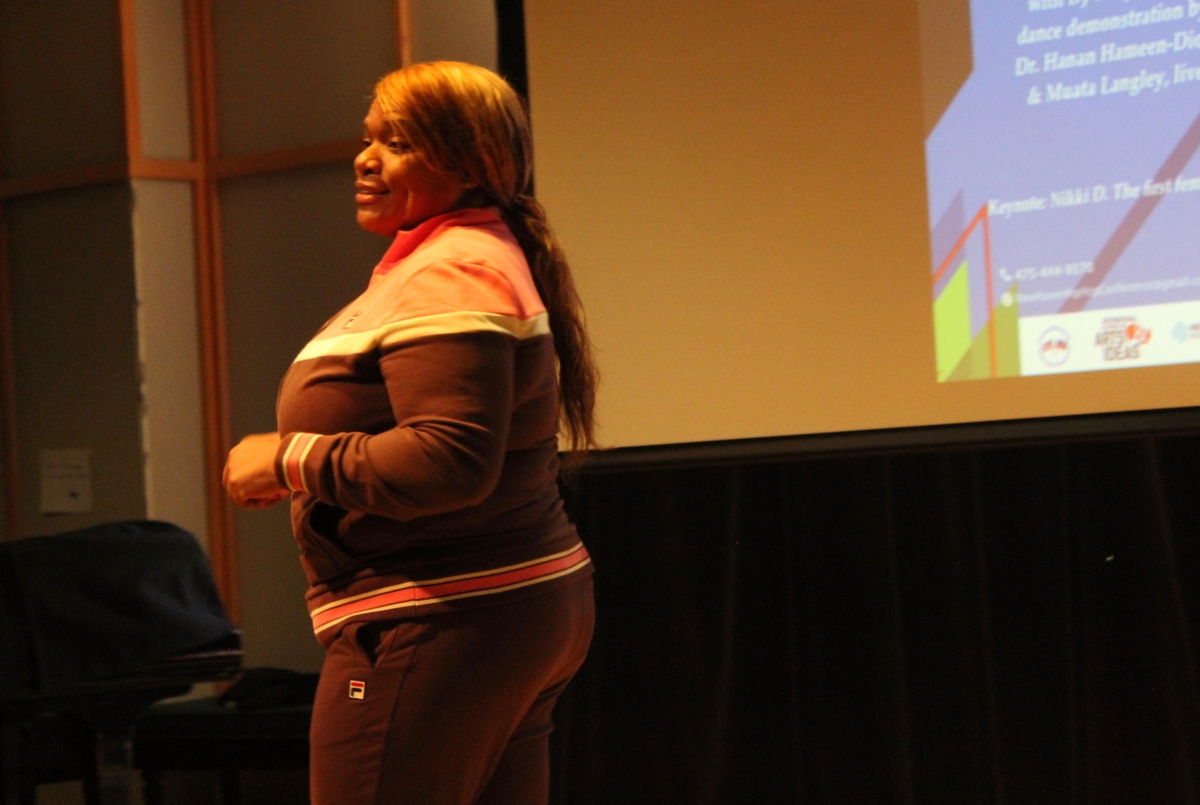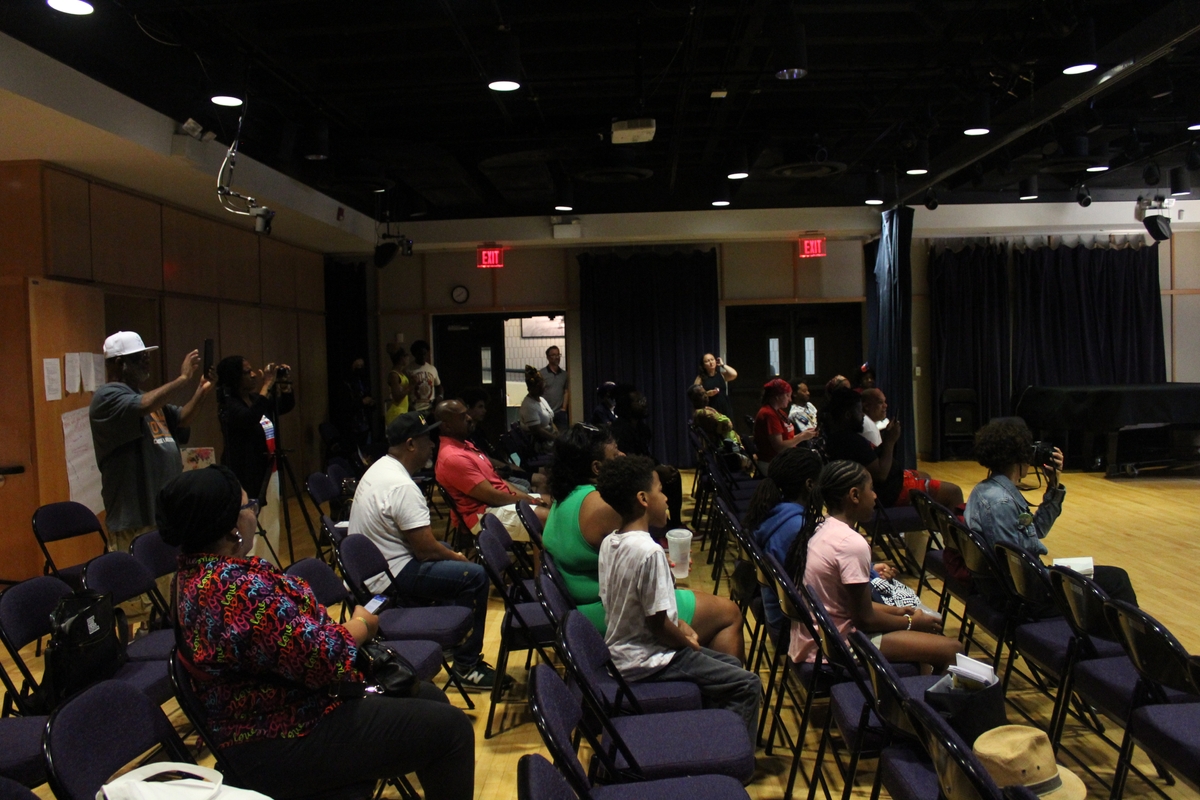
Brian Slattery Photos
The dancers in the circle were lifting up their own spirits and the spirits of those around them. They were participating in a culture that was now in its third generation of practitioners. And, as was explained, they were helping strengthen and preserve it; if they didn’t, they could lose it.
The dance was part of the sixth annual New Haven Hip Hop Conference, presented by Ms. Hanan’s Dance and Beyond, Inc., Artsucation Academy Network, and the Southern Connecticut State University Africana Studies Program. Hosted by Neighborhood Music School on Monday, the conference’s programming included a presentation by author Jill Snyder about mother and daughter Lucy and Lois Tritton — the last enslaved persons sold on the New Haven Green, in 1825 — a panel from Ice the Beef, and a screening and discussion of Charlie Ahearn’s 1982 film Wild Style.
But in the middle of that was a segment of programming titled “The Evolution of Hip Hop,” in which DJ Tony Crush, Dr. Hanan Hameen-Diop, Reina Pelle, Bobby Pheenix, and Nikki D — the first female MC signed to Def Jam Records — connected the dots of hip hop culture and offered an honest and sometimes bracing message about how that culture has changed and the challenges it faces today.

DJ Tony Crush — one of the founding members of the Cold Crush Brothers, who formed in 1978 to become one of the first hip hop groups in the country — first offered a history of the elements of the music that made up hip hop, showing how, from the start, hip hop was a multifaceted art form. Its DJs drew their inspiration from multiple genres, from funk and jazz to rock and beyond, to make something new. He walked the audience through a DJ set that checked Marvin Gaye and Cat Stevens, doubled down on Heatwave for “Always and Forever” (“because we were civilized,” he said, “and yes, we did slow dance”) and “Ain’t No Half Stepping.”
He lifted up the dance set even more with Cymande’s “Bra,” then used the early hip hop classic “Rapper’s Delight” to demonstrate “the beginning of cutting — not the scratching yet, but the cutting.” That was a technique in which the DJ could crossfade between two records of the same song, resetting an instrumental break to create an indefinite loop. Originally that instrumental break was looped for parties, because dancers liked having a long segment of rhythm and groove to keep moving to. But it turned out to also be the seed for two other foundational elements of hip hop: rapping and breakdancing.

That was Hameen’s cue. She began by pointing out that breakdancing earned its name from its specific origins: it was the style dancers developed to dance to the instrumental breaks in the music that DJs created, the rhythmic loops that could go on “forever.” Dance battles spurred creativity and let off steam. “Instead of fighting, they worked it out on the dance floor,” Hameen said. It was about “creativity and originality.”
In the melding of music, rapping, dance, graffiti, and fashion, Hameen said, hip hop at its origin in the South Bronx in the 1970s became something broader and deeper, rooted in the community, geared toward personal and social uplift, and nurturing personal and artistic growth. As Hameen, who is 44, grew up with it, she said, she understood that “hip hop is something that you do. It’s not an outfit you put on.” She then fired a first rhetorical shot at mainstream hip hop: “Right now, we have a caricature of hip hop,” she said.
It was an aside that lingered in the air as Hameen, aided by music from DJ Tony Crush, got many of the conferencegoers to their feet. She showed them a few moves, talking them through the body awareness she needed to make them work. Then she had them form a circle. Each person in the circle had their chance in the middle to flaunt their dance style, and it was up to everyone else to cheer them on, reserving special praise for the best moves.
“This is the hip hop I grew up with,” Hameen said. She asked the people who had participated how they felt.
“I feel peace,” said one. “I feel love,” said another. The testimonies continued. “I feel healing.” “I feel energized.” “Calm.” “Connected.” “Open.” “I feel happiness.” Finally: “I feel hip hop.”
DJ Tony Crush nodded. “The whole thing about hip hop was having fun and bringing people into it,” he said. He added a final element to the ingredients of hip hop: “knowledge,” he said, “of self, your community, everything.” The culture of hip hop in its early days was “a peaceful movement.”
It was also about taking the culture and making it your own, then adding something to it. “You see it and bring your own flavor to it,” Crush said. That went for DJs, MCs, dancers, and graffiti artists. Everyone was expected to know the culture and innovate within it. That gave Hameen a second shot at contemporary hip hop culture. “Everyone’s dancing is so small,” she said, fitting into a box, instead of “finding your own thing to do.”

Hameen then gave the floor to Nikki D, who in her time at Def Jam Records scored a hit in 1991 with “Daddy’s Little Girl” and has been working in music ever since.
She went to the same church as Whitney Houston — the New Hope Baptist Church in Newark, N.J. — when she was a child. She got into hip hop as a teeanger, sneaking into nightclubs at 15. She was drawn to the role of the MC as master of ceremonies, the person in charge of “keeping the party going,” and thrilled to rap battles where MCs could settle the question of who could handle the mic better, as a lyricist or a freestyler. When she was younger, she said, “when someone says they got 16 loaded,” they meant 16 bars of verses for music, not bullets.
Freestyling — making verses up on the spot — “was practice,” she said, not just for more composed verses, but for the lifestyle of it. “You breathe it, you dream it, you sleep it, you eat it,” she said. “You wake up an MC.” That culture flourished in the early years of hip hop, she said, when people weren’t paying as much attention. “Until money hits the table, nobody cares what we do,” she said. The violence was all verbal. An MC “didn’t actually want to hurt you. That’s the difference between then and now.”
She took conferencegoers through those formative years, when hip hop moved from parks to mixtapes to recording studios — that is, the commercialization by which “MCs became ‘artists,’ ” she said. The genre was dominated by men fast; “the ladies were writing back then and nobody knew that,” she said. She made sure to mention Sylvia Robinson, who was founder and CEO of Sugar Hill Records and was the force behind pioneering hip hop songs “Rapper’s Delight” and “The Message,” songs that for a certain age group is “our soul music,” Nikki D said.

She brought the audience through her early days in music in Los Angeles, where she befriended Ice T. “I had to continuously prove myself” as a woman, she said, even as she credited Salt N Pepa for “kicking the door down” for other women to be MCs. She recalled how, in the early 1980s, “hip hop wasn’t as big in L.A.” She didn’t know any DJs and wrote her raps over existing songs. ”
“That’s how you became a true MC,” she said. “We did it where we had to get all the ingredients. We had to cook it.” It strengthened the sense that “you hungry for it, you do it from the heart and soul.” That meant memorizing your own verses and having them ready to go at a moment’s notice, because you never knew when that break was going to come. She explained that many MCs now don’t have that same commitment to memorization, or to learning how the rest of hip hop works. “Evolution is okay,” she said. “I just have a problem when you remove the essence.”
Rappers used to go after each other over their abilities as rappers, she said. Now, many rappers in beefs “don’t say nothing,” or are just “braggadocious” about money and materialism. “We’re not talking about the culture anymore,” she said. “We’re talking about the business of rap music.” It would stay that way, too, she suggested, if those who knew the culture didn’t push back. “If you leave it up to the machine, this will be what the kids believe they should be doing,” she said. She noted the way rhetorical battles gave way to real ones, the way money changed rappers’ values, the way the elements of hip hop — rapping, DJing, dancing, fashion, and graffiti — had in many cases grown apart.
“These kids are selling death and they don’t even know it,” Nikki D said. “If we keep promoting death, that is what we are going to have.” Her warning drew applause from the crowd, which had been listening with rapt attention.
“And that was all freestyle!” she said.